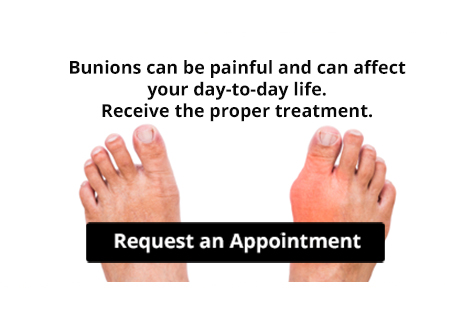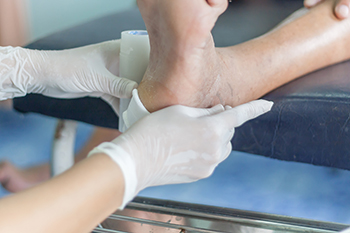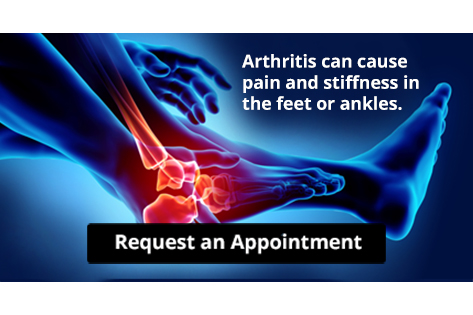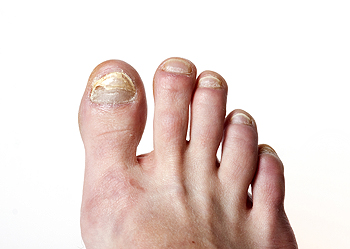Paramus / Wayne: (201) 989-0388
Clifton / Randolph: (973) 834-8853
Edison: (732) 314-7708
Montclair: (973) 834-8987
Items filtered by date: March 2022
Are Bunions Affecting Your Everyday Life?
Risks of Sports-Related Injuries
Playing sports is common among youth and often continues as you become an adult. Kids and adults are both at risk of sports-related injuries. A few simple ways to prevent getting hurt while playing sports include warming up before you start, not exercising more than necessary, and stopping when you feel extreme pain. Most sports injuries are the result of doing too much too fast, thinking you can do more than you can, over training, faulty equipment, and accidents. The most common sports injuries are heel pain, stress fractures, and Achilles tendonitis. Athletes also are at risk of twisted or sprained ankles and, in some cases, broken bones. In case of a sports-related injury, it is suggested that you resist the idea of playing through the pain and, instead, stop the activity immediately. Ice, compression and elevation should follow. It is wise to consult a podiatrist as soon as possible for a full diagnosis and treatment options.
Sports related foot and ankle injuries require proper treatment before players can go back to their regular routines. For more information, contact one of our podiatrists of Foot & Ankle Institute at One Oak Medical. Our doctors can provide the care you need to keep you pain-free and on your feet.
Sports Related Foot and Ankle Injuries
Foot and ankle injuries are a common occurrence when it comes to athletes of any sport. While many athletes dismiss the initial aches and pains, the truth is that ignoring potential foot and ankle injuries can lead to serious problems. As athletes continue to place pressure and strain the area further, a mild injury can turn into something as serious as a rupture and may lead to a permanent disability. There are many factors that contribute to sports related foot and ankle injuries, which include failure to warm up properly, not providing support or wearing bad footwear. Common injuries and conditions athletes face, including:
- Plantar Fasciitis
- Plantar Fasciosis
- Achilles Tendinitis
- Achilles Tendon Rupture
- Ankle Sprains
Sports related injuries are commonly treated using the RICE method. This includes rest, applying ice to the injured area, compression and elevating the ankle. More serious sprains and injuries may require surgery, which could include arthroscopic and reconstructive surgery. Rehabilitation and therapy may also be required in order to get any recovering athlete to become fully functional again. Any unusual aches and pains an athlete sustains must be evaluated by a licensed, reputable medical professional.
If you have any questions please feel free to contact our offices located in Wayne, Paramus, Clifton, Montclair, Clifton, Edison, and Randolph, NJ . We offer the newest diagnostic and treatment technologies for all your foot and ankle needs.
Read more about Sports Related Foot And Ankle InjuriesThe Difference Between a Fractured, Broken, and a Sprained Ankle
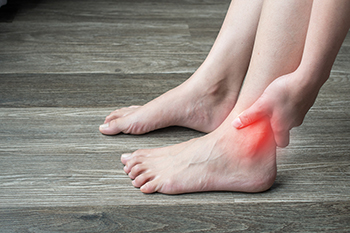 There is no difference between a fractured or broken ankle but many people, even sports coaches, do not know this. A break or a fracture constitutes the loss of bone integrity, and this is true whether there is a hairline crack or the shattering of an ankle bone. To distinguish between a fractured/broken or sprained ankle, an X-ray is needed. Fractures and breaks indicate problems with bones while sprains refer to injuries to ligaments – bands of cartilage that attach bones. You can break a bone and stretch or tear a ligament. Broken/fractured and sprained ankles hurt. If you have injured your ankle, consult with a qualified podiatrist for proper diagnosis and treatment.
There is no difference between a fractured or broken ankle but many people, even sports coaches, do not know this. A break or a fracture constitutes the loss of bone integrity, and this is true whether there is a hairline crack or the shattering of an ankle bone. To distinguish between a fractured/broken or sprained ankle, an X-ray is needed. Fractures and breaks indicate problems with bones while sprains refer to injuries to ligaments – bands of cartilage that attach bones. You can break a bone and stretch or tear a ligament. Broken/fractured and sprained ankles hurt. If you have injured your ankle, consult with a qualified podiatrist for proper diagnosis and treatment.
Ankle pain can have many different causes and the pain may potentially be serious. If you have ankle pain, consult with one of our podiatrists from Foot & Ankle Institute at One Oak Medical. Our doctors will assess your condition and provide you with quality foot and ankle treatment.
Ankle pain is any condition that causes pain in the ankle. Due to the fact that the ankle consists of tendons, muscles, bones, and ligaments, ankle pain can come from a number of different conditions.
Causes
The most common causes of ankle pain include:
- Types of arthritis (rheumatoid, osteoarthritis, and gout)
- Ankle sprains
- Broken ankles
- Achilles tendinitis
- Achilles tendon rupture
- Stress fractures
- Tarsal tunnel syndrome
- Plantar fasciitis
Symptoms
Symptoms of ankle injury vary based upon the condition. Pain may include general pain and discomfort, swelling, aching, redness, bruising, burning or stabbing sensations, and/or loss of sensation.
Diagnosis
Due to the wide variety of potential causes of ankle pain, podiatrists will utilize a number of different methods to properly diagnose ankle pain. This can include asking for personal and family medical histories and of any recent injuries. Further diagnosis may include sensation tests, a physical examination, and potentially x-rays or other imaging tests.
Treatment
Just as the range of causes varies widely, so do treatments. Some more common treatments are rest, ice packs, keeping pressure off the foot, orthotics and braces, medication for inflammation and pain, and surgery.
If you have any questions, please feel free to contact our offices located in Wayne, Paramus, Clifton, Montclair, Clifton, Edison, and Randolph, NJ . We offer the newest diagnostic and treatment technologies for all your foot care needs.
Read more about Ankle Pain
Are You Suffering From Ingrown Toenails?
Blue or Purple Feet Can Be a Sign of Trouble
If you drop something on your foot, it will likely turn purple or blue from bruising. This is normal, and the common solutions of rest, ice, elevation, and compression should help ease the pain as your foot heals. However, chronic discoloration of the feet can be a sign of restricted blood flow brought on by other conditions. Among them are diabetic neuropathy, peripheral artery disease (PAD), lupus, or Raynaud’s disease. In some way all of these conditions limit the flow of blood to the extremities and can cause foot swelling, discoloration and numbness. If you notice that your feet have changed color for longer periods, it may be wise to consult a podiatrist who can offer a complete examination and diagnosis of your feet and recommend the best treatment options for you.
Everyday foot care is very important to prevent infection and other foot ailments. If you need your feet checked, contact one of our podiatrists from Foot & Ankle Institute at One Oak Medical. Our doctors can provide the care you need to keep you pain-free and on your feet.
Everyday Foot Care
Often, people take care of their bodies, face and hair more so than they do for their feet. But the feet are a very important aspect of our bodies, and one that we should pay more attention to. Without our feet, we would not be able to perform most daily tasks.
It is best to check your feet regularly to make sure there are no new bruises or cuts that you may not have noticed before. For dry feet, moisturizer can easily be a remedy and can be applied as often as necessary to the affected areas. Wearing shoes that fit well can also help you maintain good foot health, as well as making it easier to walk and do daily activities without the stress or pain of ill-fitting shoes, high heels, or even flip flops. Wearing clean socks with closed shoes is important to ensure that sweat and bacteria do not accumulate within the shoe. Clean socks help to prevent Athlete’s foot, fungi problems, bad odors, and can absorb sweat.
If you have any questions please feel free to contact our offices located in Wayne, Paramus, Clifton, Montclair, Clifton, Edison, and Randolph, NJ . We offer the newest diagnostic and treatment technologies for all your foot and ankle needs.
A Common Treatment Option for a BrokenToe
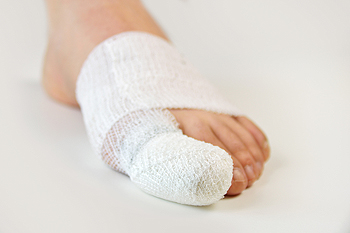 Common causes of broken toes can include stubbing your toe against a piece of furniture or dropping a heavy object on it. Each toe consists of small bones and can abruptly break from sudden impact. It can be easy to notice a broken toe: Common symptoms include severe pain, bruising, and swelling. Relief may be found when the affected foot is elevated, and this may help to reduce some of the swelling. Some patients find it helpful to tape the broken toe to the toe next to it. This is referred to as buddy taping and can be effective in providing necessary stability. It is suggested to stay off the foot, and to refrain from physical activity that requires walking. If you have broken your toe, please seek counsel from a podiatrist who can help you with correct treatment methods.
Common causes of broken toes can include stubbing your toe against a piece of furniture or dropping a heavy object on it. Each toe consists of small bones and can abruptly break from sudden impact. It can be easy to notice a broken toe: Common symptoms include severe pain, bruising, and swelling. Relief may be found when the affected foot is elevated, and this may help to reduce some of the swelling. Some patients find it helpful to tape the broken toe to the toe next to it. This is referred to as buddy taping and can be effective in providing necessary stability. It is suggested to stay off the foot, and to refrain from physical activity that requires walking. If you have broken your toe, please seek counsel from a podiatrist who can help you with correct treatment methods.
A broken toe can be very painful and lead to complications if not properly fixed. If you have any concerns about your feet, contact one of our podiatrists from Foot & Ankle Institute at One Oak Medical. Our doctors will treat your foot and ankle needs.
What to Know About a Broken Toe
Although most people try to avoid foot trauma such as banging, stubbing, or dropping heavy objects on their feet, the unfortunate fact is that it is a common occurrence. Given the fact that toes are positioned in front of the feet, they typically sustain the brunt of such trauma. When trauma occurs to a toe, the result can be a painful break (fracture).
Symptoms of a Broken Toe
- Throbbing pain
- Swelling
- Bruising on the skin and toenail
- The inability to move the toe
- Toe appears crooked or disfigured
- Tingling or numbness in the toe
Generally, it is best to stay off of the injured toe with the affected foot elevated.
Severe toe fractures may be treated with a splint, cast, and in some cases, minor surgery. Due to its position and the pressure it endures with daily activity, future complications can occur if the big toe is not properly treated.
If you have any questions please feel free to contact our offices located in Wayne, Paramus, Clifton, Montclair, Clifton, Edison, and Randolph, NJ . We offer the newest diagnostic and treatment technologies for all your foot and ankle needs.
Arthritis Can Cause Pain in the Feet and Ankles
Topical Treatments for Toenail Fungus
Onychomycosis, more commonly known as toenail fungus, is an infection of the toenails. There are a variety of treatment options available to clear up the fungus, including oral antifungal medications, topical ointments, and laser therapy. While oral antifungals are considered to be very effective, they are not the right treatment option for everyone. Oral antifungals can cause unwanted side effects and may interact with other drugs that you are taking. Topical treatments are applied directly to the nail. Recent advances in topical medications have made them more effective than they once were, with new formulas having more success penetrating the nail bed to cure the fungus. To learn more about topical treatments for toenail fungus, please consult with a podiatrist.
If left untreated, toenail fungus may spread to other toenails, skin, or even fingernails. If you suspect you have toenail fungus it is important to seek treatment right away. For more information about treatment, contact one of our podiatrists of Foot & Ankle Institute at One Oak Medical. Our doctors can provide the care you need to keep you pain-free and on your feet.
Symptoms
- Warped or oddly shaped nails
- Yellowish nails
- Loose/separated nail
- Buildup of bits and pieces of nail fragments under the nail
- Brittle, broken, thickened nail
Treatment
If self-care strategies and over-the-counter medications does not help your fungus, your podiatrist may give you a prescription drug instead. Even if you find relief from your toenail fungus symptoms, you may experience a repeat infection in the future.
Prevention
In order to prevent getting toenail fungus in the future, you should always make sure to wash your feet with soap and water. After washing, it is important to dry your feet thoroughly especially in between the toes. When trimming your toenails, be sure to trim straight across instead of in a rounded shape. It is crucial not to cover up discolored nails with nail polish because that will prevent your nail from being able to “breathe”.
In some cases, surgical procedure may be needed to remove the toenail fungus. Consult with your podiatrist about the best treatment options for your case of toenail fungus.
If you have any questions, please feel free to contact our offices located in Wayne, Paramus, Clifton, Montclair, Clifton, Edison, and Randolph, NJ . We offer the newest diagnostic and treatment technologies for all your foot care needs.
Read more about Treating Toenail Fungus
